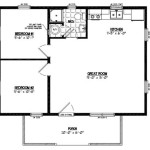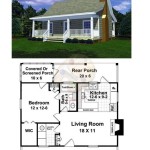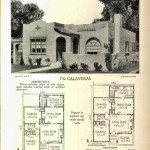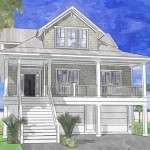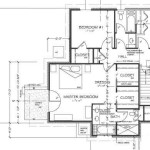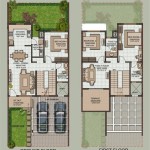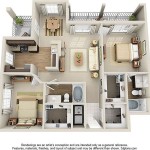House Plans With In-Law Suites Attached: Exploring Options for Multi-Generational Living
The concept of the nuclear family, while still prevalent, is increasingly giving way to multi-generational living arrangements. Rising housing costs, aging populations, and cultural shifts are contributing factors to this trend. As a result, demand for house plans incorporating attached in-law suites is on the rise. These suites offer a valuable solution for families seeking to accommodate elderly parents, adult children returning home, or other relatives while maintaining a degree of independence and privacy for all parties involved.
House plans with in-law suites attached offer a variety of architectural styles and layouts, catering to diverse needs and aesthetic preferences. Understanding the different configurations available, the considerations involved in selecting the right plan, and the potential benefits and challenges of this type of housing is crucial for anyone considering this option. This article will explore key aspects of house plans with attached in-law suites, providing a comprehensive overview of design elements, practical considerations, and potential advantages.
Defining the In-Law Suite: Essential Components and Variations
The term "in-law suite," also sometimes referred to as an accessory dwelling unit (ADU) or granny pod, generally describes a self-contained living space attached to the main residence. While the specifics may vary, several key components are typically included in an in-law suite design. These include a private bedroom, a bathroom (often with accessibility features), a living area, and a kitchenette or full kitchen. The presence of a separate entrance is also a common characteristic, allowing for independent access and egress without disturbing the main residence.
Variations in in-law suite designs can be significant. Some suites may be relatively small and simple, providing basic living accommodations. Others may be more elaborate, incorporating features such as a private patio, a dedicated laundry area, or even a separate garage space. The size and complexity of the suite often depend on factors such as the available space, the budget, and the specific needs of the intended occupants.
The attachment of the in-law suite to the main residence can also take different forms. Some suites are integrated seamlessly into the existing floor plan, sharing a common wall and sometimes even a common entrance hall. Others are designed as distinctly separate units, connected to the main house by a breezeway or a short hallway. The choice of attachment style often depends on the desired level of privacy and independence for the occupants of the suite.
Furthermore, the location of the in-law suite within the house can vary. Common locations include above the garage, in a remodeled basement, or as an addition to the side or rear of the house. Each location presents distinct advantages and disadvantages in terms of accessibility, natural light, and integration with the existing structure.
Key Considerations When Choosing a House Plan with an In-Law Suite
Selecting the right house plan with an attached in-law suite requires careful consideration of several factors. These include the needs and preferences of the occupants of both the main residence and the suite, the available space and budget, and local zoning regulations. A thorough assessment of these factors is crucial to ensure that the chosen plan meets the long-term needs of the family and complies with all applicable laws.
One of the most important considerations is the needs of the occupants of the in-law suite. If the suite is intended for elderly parents, accessibility features such as grab bars, wider doorways, and a walk-in shower may be essential. If the suite is intended for adult children, a larger living area and a more elaborate kitchen may be desirable. Understanding the specific needs and preferences of the occupants is critical to selecting a plan that provides a comfortable and functional living space.
The available space and budget are also important constraints. The size and complexity of the in-law suite will be limited by the available space on the property and the amount of money that can be allocated to the project. It is important to work with an architect or designer to develop a plan that maximizes the available space and stays within budget. This may involve making compromises on certain features or choosing less expensive materials.
Local zoning regulations can also significantly impact the design and construction of an in-law suite. Many municipalities have specific rules governing the construction of accessory dwelling units, including restrictions on size, location, and occupancy. It is essential to research local zoning regulations before selecting a house plan to ensure that the proposed suite complies with all applicable laws. Failure to comply with zoning regulations can result in fines, delays, or even the denial of building permits.
In addition to these practical considerations, aesthetic preferences and the overall architectural style of the house should also be taken into account. The in-law suite should be designed to complement the main residence and maintain a cohesive look and feel. This may involve using similar materials, colors, and architectural details. A well-designed in-law suite can enhance the value and appeal of the property as a whole.
Benefits and Challenges of Living in a House with an Attached In-Law Suite
Living in a house with an attached in-law suite offers several potential benefits, including increased financial security, improved family support, and enhanced personal relationships. However, it also presents certain challenges, such as potential conflicts over privacy, noise, and shared resources. A realistic assessment of both the benefits and challenges is essential before making the decision to live in a multi-generational household.
One of the most significant benefits of an in-law suite is the potential for increased financial security. Sharing living expenses with family members can significantly reduce the financial burden on all parties involved. Elderly parents may be able to contribute to household expenses, while adult children may be able to save money while living at home. In addition, the in-law suite can potentially be rented out to generate additional income.
An attached in-law suite can also improve family support and enhance personal relationships. Living close to family members can make it easier to provide care and support for elderly parents or young children. It can also create opportunities for closer relationships and stronger family bonds. Multi-generational living can be particularly beneficial for families with busy schedules, as it allows for shared responsibilities and mutual support.
However, living in a house with an attached in-law suite also presents certain challenges. Maintaining privacy can be difficult when living in close proximity to family members. Noise from the main residence can be disruptive to the occupants of the suite, and vice versa. Conflicts can also arise over shared resources, such as parking spaces, laundry facilities, or outdoor areas.
To mitigate these challenges, it is important to establish clear boundaries and expectations from the outset. This may involve setting specific rules regarding noise levels, shared resources, and privacy. Regular communication and open dialogue are also essential to address any concerns or conflicts that may arise. With careful planning and open communication, the benefits of living in a house with an attached in-law suite can far outweigh the challenges.
Ultimately, the decision to live in a house with an attached in-law suite is a personal one that should be based on the specific needs and circumstances of the family. By carefully considering the factors discussed in this article, individuals can make an informed decision and choose a house plan that provides a comfortable, functional, and fulfilling living environment for all members of the household.
The future of housing may well be shaped by the growing demand for multi-generational living solutions. As populations age and housing costs continue to rise, house plans with attached in-law suites will likely become an increasingly popular and viable option for families seeking to balance independence, support, and affordability.

Homes With Mother In Law Suites

House Plans With In Law Suites Houseplans Blog Com

House Plan 65862 Tuscan Style With 2091 Sq Ft 3 Bed 2 Bath 1

One Story With In Law Suite Plan 2286

So I Have A Project Where Am Designing Main House And An Attached Mother In Law Suite The Is 11 Guest Plans New

6 Bedroom Country Style Home With In Law Suite The Plan Collection

House Plans With In Law Suites Houseplans Blog Com

Find The Perfect In Law Suite Our Best House Plans Dfd Blog

Cape Cod House Plans With Inlaw Suite Best Of Mother In L Shaped New One Story

House Plans With In Law Suites Houseplans Blog Com
Related Posts


